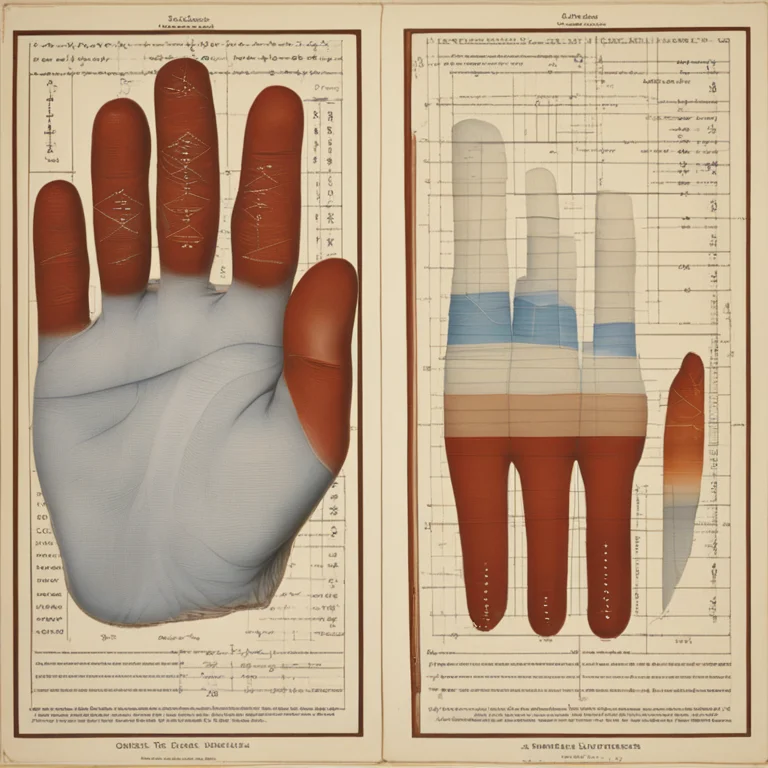
The Roots of Palm Lines: A Scientific Overview
Discover the scientific factors behind the formation of the unique lines on your palms and their potential significance.
article by Nora Pennington
The Science Behind Palm Lines
Palm lines, often a subject of intrigue in palmistry, have their roots in scientific phenomena. These lines, scientifically known as palmar flexion creases, form in the womb and can tell a story that combines genetics, development, and even potential health insights. Understanding the natural occurrence of these lines requires a delve into embryology, where the foundation of these intriguing patterns takes shape. They are not random; instead, each crease is a result of specific movements and developmental factors inherent to human growth.

Fetal Development and Palm Lines
The creation of palm lines occurs during the early stages of fetal development. Around the 12th week of gestation, as the fetus begins to move in the womb, the skin on the hands starts to fold at the points of natural bending, forming distinct patterns. These lines further deepen as the fetus continues to move and flex their hands, solidifying the foundations of what will later be used for grip and dexterity. Thus, the primary purpose of palm lines is functional, aiding in the flexibility and movement of our hands.

Genetic Influence on Palmistry Markings
While palm lines serve a physiological purpose, their specific patterns are individualized and can possess genetic links. The general blueprint for these lines is inherited, explaining why some palm line patterns can run in families. However, variations are immense, influenced by genetic variations and environmental factors that impact an individual's development in utero. This combination of heredity and unique developmental circumstances creates the singular palm prints we each have.
Environmental Impacts on Palmar Creases
The environment within the womb plays a significant role in molding palm lines as well. Nutritional factors, maternal health, and overall development can alter the eventual appearance of these lines. Stress or illness during pregnancy can potentially influence the depth or definition of palmar creases, making them a potential subject of interest for medical research looking for prenatal indicators of certain conditions.
Modern Medical Perspectives on Palm Lines
Today's medical community looks at palm lines not just for their physical utility but also for possible health insights. Specific patterns in the lines have been linked to genetic disorders, such as a single transverse palmar crease often associated with Down syndrome. However, it's crucial to approach these associations with caution, as not all variations in palm lines signify health issues. Further advancements in dermatoglyphics, the study of skin patterns, continue to enhance our understanding of these intricate markers.
The Evolution and Future of Palm Lines
The future of palm lines in an evolutionary context remains a subject of speculation. While their primary function remains unchanged, the nuances of these lines continue to evolve across populations, reflecting subtle differences in genetics and movement habits. As technology advances, digital scanning and analysis might provide more detailed insights into the complexities of our palm lines, potentially unlocking new areas of research in genetics as well as personalized medicine.
Published: 1/10/2024
Modified: 1/10/2024
More predictions
Come back here soon to learn more about yourself and your future


The Essence of Palmistry: Insights into Your Palm
Delve into the fascinating world of palmistry and discover what the lines on your palm reveal about your life path and personality, with contemporary relevance for the modern seekers.


Guide to Palmistry: Interpreting Your Palm Lines
Discover the ancient art of palmistry with our comprehensive guide to reading and interpreting the lines on your palms.


The Art of Hand Analysis
Discover the insights of palmistry through our article on hand analysis – your guide to the lines and shapes that reveal life's secrets.